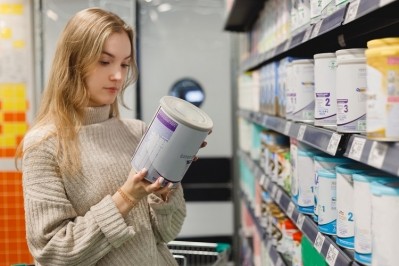Highly processed infant formula meets EU legal requirements, according to study results

Scientists evaluated the eHF infant formula (developed with protein from Peptigen IF 3080) using recognised safety parameters to determine product efficacy and eligibility, in relation to European Food Safety Authority (EFSA) guidelines on protein hydrolysates.
Infant formula from partially or extensively hydrolysed protein (HA) is sometimes recommended as an alternative to cow’s milk protein-based formula (CF) for infants not exclusively breastfed and with an increased risk of atopic disease.
Previous studies have observed normal growth in term and preterm infants after consumption and validated its application under Directive 2006/141/EC. However, a recent EU directive requires clinical evaluation of all new products entering the market to establish safety and suitability.
Methodology
The random, double-blind, noninferiority trial, published in Nutrients, involved 21 study sites across Europe (11 in Bulgaria, one in Germany, eight in Hungary, and one in the Czech Republic) and infants aged up to 25 days old. The intervention lasted 120 days, with a subsequent follow-up to 180 days.
Eligible infants (318) were randomised to one of two formula-fed groups (FF) (eHF or CF) and exclusively fed either formula for 26 days. They attended five study visits (including follow-up) to gather anthropometric measures of body weight (g), length (cm), and head circumference (cm).
Formula intake was recorded by parents in diaries completed three days prior to study visits. Complementary food or drink were introduced from 120 days.
A reference group comprised 41 infants, exclusively breastfed (BF) for at least three months.
Impact on weight
Growth parameters decreased in all groups from birth to the first study visit (V1 at approximately 30 days), however healthy term infants fed eHF experienced noninferior weight gain up to 180 days, compared to CF infants.
Nevertheless, there was no significant difference in overall growth between the two FF groups, and all fell within the normal range, the authors report.
“The observed weight gain in both FF groups was similar to results reported in other studies using the same protein source of extensively hydrolysed whey protein and the same whey : casein ratio using intact cow’s milk protein,” they write.
“Weight gain during the period of at least three months of exclusive formula feeding was comparable to recent literature on infant formula manufactured from intact or hydrolysed (partially or extensively) protein ranging between 28.0 and 31.4 g/day.”
Baseline weight, sex, gestational age, and maternal body mass index (BMI) were relevant to weight gain observed at V1 and V4 and conformed with studies on the impact of birth weight on infant growth, they assert.
“Also, the impact of gestational age and maternal BMI on infant weight is well documented. Furthermore, sex difference during early growth is well documented in the scientific literature, and thus was included as a stratification factor during randomisation.”
Adequate growth
Average total daily energy intake with eHF adhered with values published by the EFSA, and infants exhibited similar growth rates to breastfed subjects (BF).
“The products used in the present study have an energy content (66 kcal/100 mL) that is close to mature human milk and a slightly reduced protein content of 1.2–1.3 g/100 mL (1.9 g/100 kcal), in comparison to standard infant formula. Furthermore, a recent meta-analysis reports breastmilk intake in exclusively breastfed, healthy term infants of 735 to 729 mL/day at three and six months, respectively. Together with the similar feeding frequency, this may explain the observed similar growth between FF and BF in the present study.”
The study authors comment that analyses confirm the formula meets infant requirements for “adequate growth” and is “suitable and safe as the only source of nutrition for infants during the first months of life”.
Source: Nutrients
Published online, April 14, 2023: https://doi.org/10.3390/nu15081901
‘Safety and Suitability of an Infant Formula Manufactured from Extensively Hydrolysed Protein in Healthy Term Infants’
Authors: Lindsey Otten, Elisabeth Schelker, Hanna Petersen, Antonia Nomayo, Manja Fleddermann, Bianca M. Arendt, Theresa Britzl, Elisabeth M. Haberl and Frank Jochum on behalf of the HASI Study Group





